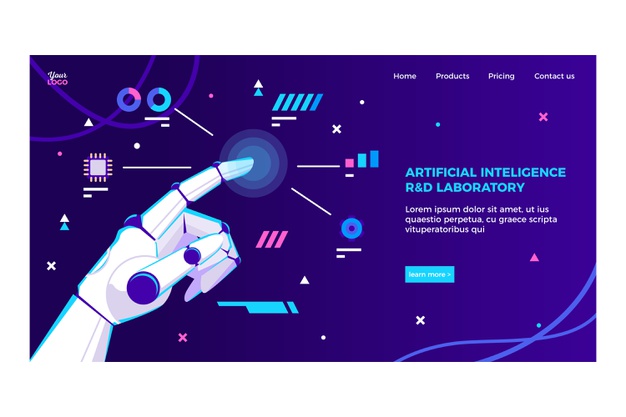The New model for accelerated enterprise data sciences
3AI January 19, 2021

Data’s impact on enterprise is gathering intense momentum. Key trends in enterprise data science for this year include a focus on the Internet-of-Things (IoT), highly improved cognitive solutions and the rise of insight-driven organizations. With such growth in potential uses, sources and types of data, enterprises of all sizes are now facing increasing complexity when it comes to collection, management and insight-analysis. Increased complexity, in turn, makes for new challenges for decision-makers and data scientists.
Enterprise Data Science Snapshot
A recent trends on integrated single-stack data science solutions points out the challenge of data complexity, citing the following trends among survey respondents:
- 93 percent of organizations cite significant data growth over the past year.
- Respondents use an average of 30 unique data sources on a regular basis.
- 40 percent of respondents analyze unstructured data from both internal and external sources.
While larger data sets can provide deeper and more impactful insights, these also have major implications on the resources needed by organizations, especially when it comes to time-consuming and potentially expensive data collection, storage and data science involved. It can be extremely heavy on resources to manipulate and visualize this data into formats that are quickly and easily understood for decision-making. As a business’s data begins to grow, the more likely it is to experience these challenges.
Implementing data science strategies to properly manage complex enterprise data is not an easy task, either. Enterprises often spend millions of dollars each year on dedicated infrastructure and software solutions to crunch numbers and process information. In addition, these big organizations have traditionally hired specialists and data scientists to regularly maintain their complex pipelines.
However, the current trend is moving toward self-service data science platforms, which promise ease-of-use through visual approaches to managing data and algorithms. The downside is that not all of these solutions, yet, are capable of handling complex data sets, which often require parsing vast amounts of data from multiple sources. This puts enterprises in a difficult position, forcing them to make compromises based on their priorities: is it more important to be able to generate engaging visuals using solutions with simple UX, or to be able to generate in-depth insights from more complex solutions?
Performance without the complexity
Fortunately, there are several new data science tools that offer tangible solutions to this issue so that organizations large and small don’t have to compromise on quality. The single-stack enterprise data science solution empowers businesses to combine all disparate data sources in order to gain a deeper insight for just about any application – all without complex coding required.
These tools support detailed insights, while also maintaining clear visualization, which makes the data easily digestible for both IT experts and non-IT professionals. Such speed and simplicity in managing data allows for businesses to make the best data-driven decisions with minimal latency, thus ensuring agility in operations.
Converting the so called ‘Big Data’ to Data-Monetization Engine
Big Data is the latest technology wave impacting C-Level executives across all areas of business, but amid the hype, there remains confusion about what it all means. The name, seemingly to people, emphasizes the exponential growth of data volumes worldwide, but more nuanced definitions of Big Data incorporate the following key tenets: diversification, low latency, and ubiquity. In the current developmental-phase CIOs are investing in platforms to “manage” Big Data.
But there is an emerging realization across public and private sectors that there must be more to “Big Data” than just data and platform. CIOs must transform these Big Data platforms and the data they house from cost-centers to data-monetization engines. Forrester likens this very transformation to “refining oil”, and believes data science is at the heart of the new oil rush, the refining process. Big Data emphasizes volume, diversification, low latencies, and ubiquity, whereas data science introduces new terms including, predictive modeling, machine learning, parallelized and indatabase algorithms, Map Reduce, and model operationalization. So what does this mean? It infers an evolution beyond the traditional rigid output of aggregated data: business intelligence. It is a use-case-driven, iterative, and agile exploration of granular data, with the intent to derive insights and operationalize these insights into down-stream applications.
What is Next to the legacy ‘Data-Driven’ Enterprise?
Considering the growing number of use cases relevant to your enterprise, what has changed is that these are no longer confined to legacy data-driven functions such as marketing or finance. Instead, they can and should involve nearly every functional organization in the enterprise. Given the numerous opportunities data science offers for virtually every functional organization in every sector, it is now no longer enough to be a “data-driven enterprise.” Instead, you must build a data science-driven enterprise, a.k.a. the predictive enterprise.
Why A Data Science-Powered Enterprise Transformation Is Disruptive
With the very initiation of a data science-powered transformation, the endeavor and whoever is driving it are acknowledging that the status quo for analytics utilization does not deliver against the believed potential value for the given business (however defined). As a result, any enterprise, technology, and individual overly associated with legacy or the status quo will find themselves exposed to some degree of uncertainty and possibly even vulnerability. What transpires when an enterprise kicks off such an initiative ranges within two extremes. On one side — the “bad outcome” — the effort yields a hot mess of organizational wrangling over concepts like “data ownership” and “where analytics should live”, shortsighted technology investments or the diggingin-of-heels around legacy platforms, and analytical project work-to-nowhere — all with the enterprise’s competitive advantage wavering on a precipice.
On the other end of the spectrum — the “good outcome” — the effort can yield a complete rebirth or transformation of the company built upon data-derived innovation, resulting in data science-generated intellectual property and competitive advantage. On this end of the spectrum, we often see an executive alignment on prioritization for data initiatives, a thriving data science culture, a drumbeat focus on smart data instrumentation and data quality processes, and modeling efforts with clearly defined paths to operationalization for top- or bottom-line impacting actions.
Data is growing, and so should your enterprise’s capability to manage it
Again, managing complex data can be a daunting task for an enterprise. Luckily there are new solutions that allow you thoroughly understand your data, while collecting the most detailed, real-time insight, as well. Self-service solutions now empower you with the capability to identify and analyze important trends in your data in a straightforward interface that will help you make the most well-informed business decisions.






